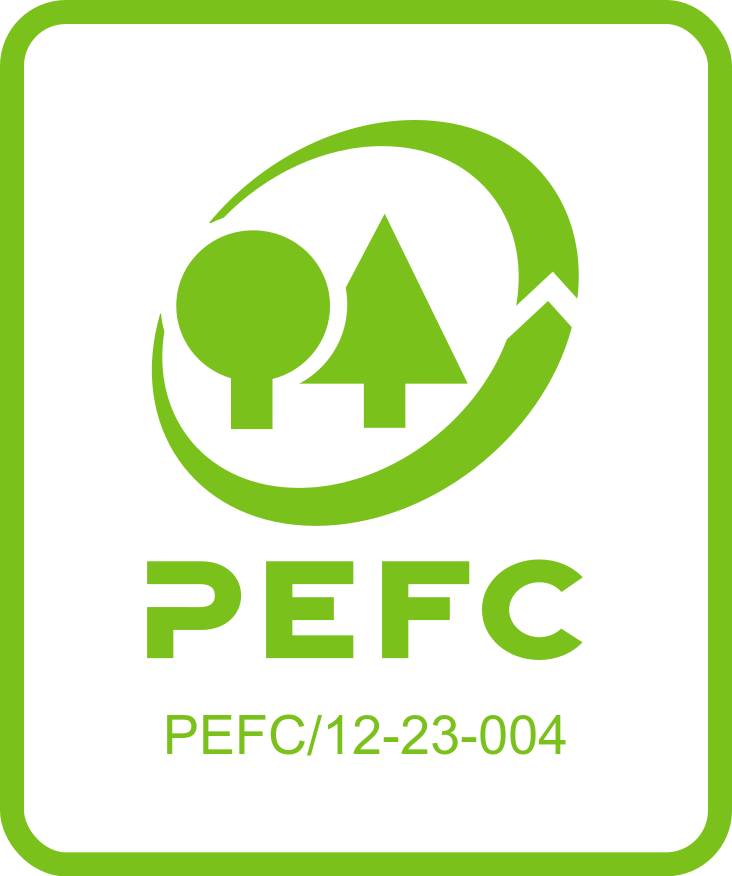Meža darbu mehanizācijas un meža biokurināmā pētījumu programma 2017

Pētījuma mērķis ir izstrādāt, aprobēt un ieviest praksē inovatīvas tehnoloģijas un darbu plānošanas instrumentus meža tehnikas ietekmes uz vidi mazināšanai, jaunaudžu mašinizētas kopšanas ciršu un galvenās cirtes efektivitātes un ražīguma, koksnes resursu tehniskās un ekonomiskās pieejamības, kā arī meža vērtības palielināšanai.
Sagaidāmie rezultāti:
Pētījumu programmas izpildes termiņš: 2016. gada 8. marts – 2020. gada 1. decembris.
2017. gadā pilnveidota risu mērīšanas iekārta un izgatavots jauns telemetrisko datu uzkrāšanas modulis, kas uzstādīts MeKA nomātajam Vimek harvesteram. Risu veidošanās mēriekārtu pēc izmēģinājumiem laboratorijas apstākļos uzstādīts SIA ASP Pluss pievedējtraktoram un iegūti sākotnējie dati ražošanas apstākļos. Turmākajos pētījumos iekārta jāizmēģina poligona apstākļos ar kopšanas ciršu forvarderu un ražošanas apstākļos ar galvenās cirtes forvarderu, strādājot kailcirtēs. Šajos izmēģinājumos 2018. gadā raksturosim tehnoloģisko koridoru seguma noturību un kravas lieluma ietekmi uz augsnes bojājumu intensitāti. Kopšanas ciršu izmēģinājumu objektos, kur tehnoloģiskie koridori izvietoti perpendikulāri ūdens plūsmas virzienam, ierīkoti ilglaicīgu novērojumu parauglaukumi augsnes sablīvējuma ietekmes uz gruntsūdeņu plūsmas ātrumu un augšanas apstākļiem novērtēšanai. Ilglaicīgi izmēģinājumu objekti ierīkoti arī grāvju atbērtņu sablīvēšanas ietekmes uz ūdens plūsmu ietekmes novērtēšanai. Šajās platībās noteikta augsnes penetrācijas pretestību uz atbērtnes, pa kuru nav pievesti kokmateriāli, un pievešanas neskartā audzes daļā. Turpinās ūdens filtrācijas ātruma analīzes un gruntsūdens līmeņa monitorings. Šos darbus plānots pabeigt 2018. gada oktobrī. 2017. gadā turpināta pārmitro platību identificēšanas metožu aprobēšana, izmantojot LiDAR un citus datus. Kontrolētos apstākļos pļavā uz organiskas augsnes novērtēta atbalsta ķēžu ar blīvu posmu izvietojumu ietekme uz risu veidošanos, degvielas patēriņu un augsnes sablīvējumu. Sagatavoti noslēguma ziņojumi par pievedējtraktoru Kranman un Logbear izmēģinājumiem, kā arī harvestera Vimek darba ražīguma rezultātiem. Pētījumā novērtēts augsnes sagatavošanas ražīgums un paliekošo koku bojājumi kopšanas cirtēs, lai izstrādātu vienādojumus augsnes sagatavošanas virziena pret nogabala garenasi ietekmes uz augsnes apstrādes izmaksām un prognozējamo atstājamo koku bojājumu īpatsvaru kopšanas cirtē, ko attiecīgajā platībā veiks pēc 20-40 gadiem. Saistībā ar aizkavēšanos risu mērītāja izgatavošanā, tikai 2018. gadā iegūsim empīriskus datus risu veidošanās un zaru ceļu seguma noturības raksturošanai organiskās augsnēs atkarībā no augsnes mitruma, valdošās sugas un pārvesto kokmateriālu apjoma, apsekojot 6 ha galvenās cirtes cirsmu ar ekstremāliem pievešanas apstākļiem. Izvēloties audzes ar ekstremāliem pievešanas apstākļiem, turpināti kāpurķēžu pievedējtraktora Logbear izmēģinājumus, taču izmēģinājumus vajadzēja pārtraukt sakarā ar traktora bojājumiem. 2017. gadā izmēginājumi netika atsākti. Sadarbībā ar SIA Niedrāji salīdzinātas kausa ar pacelšanas funkciju (“tilta” kausa) izmantošanas priekšrocības un trūkumi, pievedot kokmateriālus kopšanas cirtēs, kā arī novērtētas dubultkausa un šķirotāju iespējamās priekšrocības un trūkumi, pievedot kokmateriālus kopšanas cirtēs. Kravas lieluma ietekmi uz risu dziļumu un augsnes sablīvējumu kontrolētos apstākļos poligonā uz organiskas augsnes novērtēsim 2018. gada pavasarī, jo 2017. gadā tas nebija iespējams sakarā ar aizkavēšanos risu monitora izgatavošanā. 2017. gadā turpināta harvestera galvas padeves veltņu radīto iespiedumu novērtēšana dažādiem kokmateriālu veidiem. Šos darbus pabeigsim 2018. gadā pēc ziemas sezonas mērījumu un ražīguma uzskaites darbu pabeigšanas. 2017. gadā izstrādāta metodika koku augstuma novērtēšanai jaunaudzēs, izmantojot LiDAR datus.
Pētījums veikts Latvijas Valsts mežzinātnes institūtā “Silava” (LVMI Silava) sadarbībā ar aģentūru “Meža pētīšanas stacija”, SIA “Meža un koksnes produktu pētniecības un attīstības institūts” u.c. uzņēmumiem. Empīrisko datu ieguvi, analīzi un starpziņojuma sagatavošanu nodrošināja LVMI Silava darbinieki M. Okmanis, G. Spalva, K. Polmanis, K. Pužuls, L.L. Krumšteds, G. Rozītis, D. Lazdiņa, G. Petaja, A. Butlers, G. Saule, Z. A. Zvaigzne, J. Ivanovs, R. Gailis, T. Štāls, K. Pužuls, A. Lazdiņš.
SUMMARY
The aim of the research is elaboration, approbation and practical implementation of innovative technologies and work planning instruments to decrease environmental impact of forest machinery and to improve efficiency of mechanized thinning of young stands, as well as the final felling; to increase productivity, technical and economic accessibility of wood resources and forest value.
The expected research results:
The program duration: March 8, 2016 – December 1, 2020.
During the study period in 2017 the existing equipment for ultrasonic measurement of ruts depth and acquisition of telemetric data of forwarder was improved and new unit was built to use with different forest machines to acquire data on environmental conditions, fuel consumption and geographical coordinates. The second unit is installed on Vimek harvester rented by MeKA company. Laboratory experiments with ruts depth measurement unit are planned for second half of September and then the equipment will be installed on middle class forwarder operated by ASP Pluss company. The equipment then will be tested in polygon and later in real operational conditions, where we will compare ruts formation depending from stand characteristics like dominant species, site type and load size. The load size experiments will be only implemented in the polygon. Another experiment on impact of soil compacting in strip roads on water flow is established in 6 stands, where strip roads were installed in perpendicular to dominant slope thus hampering water flow. Characteristics like soil texture, water penetration rate and soil compaction were determined in these plots. Similar experiment was established on newly build drainage ditches (3 sites), where impact of soil compaction during roundwood forwarding on water penetration rate will be determined. Another activity continued in 2017 is evaluation of different methods for classification of wet areas in forest using high resolution LiDAR data and Sentinel II satellite image data. New type of wide and dense steel tracks was tested in polygon to compare these tracks with ECOBaltic tracks, which is the most common type of tracks in Latvia nowadays. Final reports were elaborated on the studies about productivity of Kranman forwarder and Vimek harvester. Intermediate report on Logbear tracked forwarder was prepared and updated according to recent measurement data. Final report will be elaborated after completion of field studies in very complicated forwarding conditions. Productivity of soil scarification using disc trencher and stem damages of trees remaining after commercial thinning were determined to elaborate equations characterizing correlation between number of stem damages and number of strip-roads, which is affected by direction of soil scarification. It is planned to continue to acquire field measurement data on soil bearing capacity depending from soil moisture, dominant species and amount of transported roundwood in 2018 in final felling sites. Stands with very low soil bearing capacity were selected for additional tests with Logbear forwarder, however the trials were not implemented due to unsolved technical issues with the forwarder. In cooperation with SIA Niedrāji impact of grip with tilt function on productivity and stem damages of remaining trees in thinning were evaluated resulting in very promising increase of productivity and reduction of damages, whiile grip with tilt function was used. Similarly, impact on productivity of sorting grip and additional sorters in loading compartment of forwarder in thinning were evaluated, however in this case results remains unclear and further studies in final felling and thinnings with higher density of logs are needed. Impact of load size on soil damages (rut depth and compaction) will be evaluated in 2018 in a grassland polygon with organic soil. Acquisition of field data on depth of dints in roundwood depending on type of feed rollers, stem dimensions and tree species will be also continued in winter 2018.
Research is conducted in Latvian State forest research institute “Silava” (LSFRI Silava) in a collaboration with agency “Forest research station”, Limited liability company “Forest and Wood Products Research and Development Institute”, Joint stock company “Latvia's State Forests” and other companies. Empirical data collection, analysis and preparation of interim report were provided by LVMI Silava staff M. Okmanis, G. Spalva, K. Polmanis, K. Pužuls, L.L. Krumšteds, G. Rozītis, D. Lazdiņa, G. Petaja, A. Butlers, G. Saule, Z. A. Zvaigzne, J. Ivanovs, R. Gailis, T. Štāls, K. Pužuls, A. Lazdiņš.




